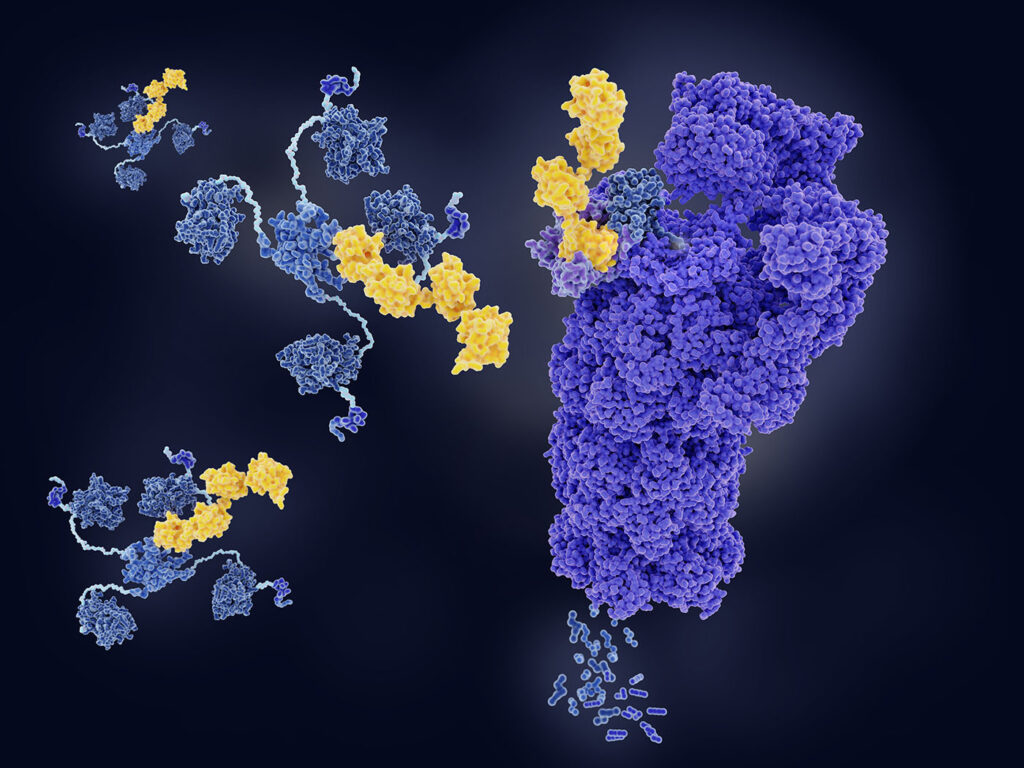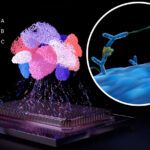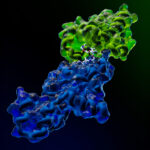Sponsored content brought to you by
Targeted protein degradation has moved well beyond its prologue more than 20 years ago.1 The number of publications describing different PROTACs (PROteolysis TArgeting Chimeras), molecular glues, and related innovations is increasing rapidly as is confidence that targeted protein degradation will lead to clinical solutions for cancer, neurodegenerative diseases, and other hard-to-treat conditions. This confidence is supported by a rapid increase in intellectual property for proximity-based molecules for targeted protein degradation and by the number of clinical candidates reaching the later stages of clinical trials.2,3 In this article, we look at two variations on the targeted protein degradation theme to demonstrate recent advances: degradation TAGs or dTAGS and intramolecular bivalent glues. But first we briefly describe the general principles of how the cell’s processes can be used to target the degradation of unwanted proteins or other cell components.
Working principle
Both PROTACs and molecular glues offer the advantage of being able to tackle previously undruggable targets. As well as providing wider access to new targets, these degraders offer benefits in safety and doses that make them attractive options to treat disease. Degraders like PROTACs and molecular glues target proteins for destruction by the cell’s ubiquitin-proteasome system. In addition, other degraders are on the horizon that make use of alternative locations such as the lysosome for the destruction of disease-related entities. This offers the possibility of removing from circulation disease effectors that are unable to bind conventional inhibitor drugs.
If the ubiquitin-proteasome system is used, a recruited ligase brings a target protein into proximity with an E3 ligase. Once the target protein and E3 ligase are united in a ternary complex with other co-factors, the ubiquitin ligase adds ubiquitin molecules (in most cases directly to the target protein) marking it for degradation by the ubiquitin-proteasome system. Once marked, the tagged protein is recognized by the proteasome and degraded into smaller peptides and amino acids. This degradation process takes the disease-causing protein out of circulation and represents the working principle of many targeted protein degraders.
dTAG protein degradation assays
Methods for targeted protein degradation continue to advance and offer increased flexibility for research and development. One recent improvement is the use of degradation TAG or dTAG technology. Like PROTACs, dTAGs are bivalent degraders that can induce the degradation of a target protein. However, the difference between dTAGs and PROTACs is that one of the ligands does not bind directly to an epitope specific for the target protein. Instead, this ligand binds to a dTAG-binding site artificially introduced into the target protein complex by genetic editing techniques like CRISPR (clustered regularly interspaced palindromic repeats)/Cas9. This refinement circumvents the need to identify and synthesize specific ligands for proteins of interest and allows a streamlined validation of potential target proteins by induced degradation. dTAGs are ideal tools for performing target validation studies for dose-dependent effects.
dTAG assays can be readily performed on BMG LABTECH’s PHERAstar® FSX microplate reader, which is ideally suited for this type of application due to its high sensitivity, fast read times, and downscaling compatibility. As shown in Figure 1, dTAG degraders can be tested for their ability to induce targeted degradation of the high bioluminescent intensity tag (HiBiT) as part of a ternary complex. For this purpose, increasing concentrations of the degraders dTAG-v1, dTAG-47, and dTAG-13 were added to HiBiT-expressing cells in a 1,536-well microplate.

The dTAG protein degradation assay utilizes a dual luciferase reporter system to measure target protein degradation. One luciferase is used as a house-keeping marker that is unaffected by dTag degradation. In this example, the marker is firefly luciferase.
A second luciferase, nanoluciferase, is present in its fragmented inactive form HiBiT and fused to the target protein of interest. The dTAG degraders establish a bond between the target protein and an E3 ubiquitin ligase via the introduced dTAG-binding motif which, leads to the formation of a ternary complex. Subsequently, the target protein and fused HiBiT fragment is ubiquitinated and degraded. LgBiT is added after degradation to measure nanoluciferase luminescence. This small nanoluciferase fragment can complete undegraded HiBiT fragments, leading to an active nanoluciferase enzyme and subsequent light emission. The ratio of the nanoluciferase/firefly emission is an indicator of the efficacy of the dTAG degrader with lower ratios as a proxy for higher target degradation. In this example, the tested dTAG molecules successfully induced the targeted degradation of the HiBiT-fusion protein complex.
New frontiers for molecular glues: Intramolecular bivalency
Molecular glues also continue to evolve for different uses in targeted protein degradation. Unlike PROTACs, which bind the ligase and the target protein at the same time, molecular glues bind either monovalently to the ligase or the target protein. One recent innovation for molecular glues has been the development of intramolecular bivalent glues.4 Unlike conventional glue degraders, intramolecular bivalent glues have two different binding sites rather than one, which allows them to bind simultaneously to two different sites on the same target protein. This cis type of intramolecular binding leads to changes in the structure of the target protein that enhance its surface complementarity with E3 ligases.
The activity of intramolecular bivalent glues can be measured using time-resolved fluorescence resonance energy transfer (TR-FRET) assays. For TR-FRET measurements, the PHERAstar FSX reader delivers robust data with very fast reading times. Dedicated lasers for excitation significantly improve assay performance and lower limits of detection as they yield higher excitation energy at a specific wavelength. Simultaneous dual emission allows two separate emission wavelengths to be measured in one single measurement which cuts reading times in half. Measurements can take place without stopping plate movement, which significantly reduces read times for an entire microplate.

As shown in Figure 2, TR-FRET assays can be used to study intramolecular bivalent glue activity for the interaction between BRD4, a protein that regulates transcription and which is implicated in cancer, and DCAF16, part of the substrate receptor for an E3 ubiquitin ligase complex. In this case, TR-FRET was used to study the formation and stabilization of the BRD4-DCAF16 complex in the presence of different concentrations of various intramolecular bivalent glues.
Conclusion
Successful research in targeted protein degradation depends not only on measurements at high sensitivity, speed and precision but also on having the flexibility to accommodate emerging assays. This flexibility makes it possible to accommodate new innovations like dTAGs and intramolecular bivalent glues described here. The PHERAstar FSX offers these features at the highest possible throughputs, making it the ideal device for performing screening campaigns and other applications in drug discovery and development. Whatever your application, the PHERAstar FSX provides uncompromised sensitivity, speed and dynamic range in all plate formats up to 3,456 wells and full automation capabilities.
References
- Békés M, Langley DR, Crews CM. PROTAC targeted protein degraders: the past is prologue. Nature Reviews Drug Discovery 2022 21(3):181-200. doi: 10.1038/s41573-021-00371-6.
- Mullard A. Targeted protein degraders crowd into the clinic. Nature Reviews Drug Discovery 2021 20(4):247-250. doi: 10.1038/d41573-021-00052-4.
- Arnold C. PROTAC protein degraders to drug the undruggable enter phase 3 trials. Nature Medicine 2024 30(11):3030-3031. doi: 10.1038/d41591-024-00072-8.
- Hsia O, Hinterndorfer M, Cowan AD, Iso K, Ishida T, Sundaramoorthy R, Nakasone MA, Imrichova H, Schätz C, Rukavina A, Husnjak K, Wegner M, Correa-Sáez A, Craigon C, Casement R, Maniaci C, Testa A, Kaulich M, Dikic I, Winter GE, Ciulli A. Targeted protein degradation via intramolecular bivalent glues. Nature. 2024 627(8002):204-211. doi: 10.1038/s41586-024-07089-6.

If you are interested in further details about microplate-based assays for targeted-protein degradation, please contact us at [email protected].




